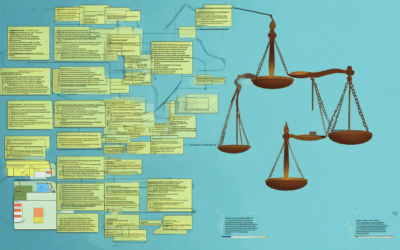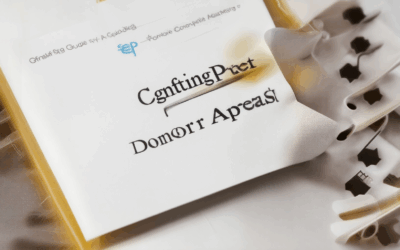In the ever-evolving world of fundraising, effective donor communication stands as a cornerstone for building lasting relationships and driving mission impact. As nonprofit organizations increasingly compete for limited resources, the ability to engage donors meaningfully has never been more crucial. This article delves into the essential strategies and principles that define effective donor communication, focusing on the three core components—Clarity, Consistency, and Confidence—that form the foundation of successful fundraising efforts. By exploring real-world examples and actionable steps, this piece aims to equip fundraisers with the tools needed to craft compelling narratives that resonate deeply with their audiences. From understanding what donors truly value to aligning communication with organizational goals, this comprehensive exploration of donor communication will provide valuable insights for anyone looking to enhance their fundraising strategies and strengthen donor relationships.
Key Takeaways
- Tailored messages strengthen donor engagement and retention.
- Regular updates demonstrate transparency and keep donors informed.
- Building emotional connections fosters long-term loyalty.
- Active listening builds trust and ensures donor satisfaction.
- Consistent communication schedules reinforce brand credibility.
- Public acknowledgment boosts donor morale and motivation.
- Respecting donor preferences enhances overall satisfaction.
- Acknowledgment is key to making donors feel appreciated.
- Transparency about fund usage builds lasting trust.
- Measurable outcomes demonstrate the impact of donations.
- Clear mission statements attract and retain donors.
- Competent fundraising teams drive successful campaigns.
- Collaboration leads to better outcomes and resource utilization.
- Consistent efforts build long-term supporter loyalty.

Communicating Effectively About Donation
Effective communication is essential when discussing donation options, whether it’s about organ donation, charity contributions, or other forms of giving. To ensure your message resonates and drives action, consider the following strategies:
1. Clarity and Simplicity
Be upfront and honest about the purpose of the donation and its impact. Avoid jargon or vague statements. Clearly articulate how contributions will be used and the difference they can make. For example, specify if funds will go towards a particular project or cause.
2. Empathy and Connection
People are more likely to donate when they feel emotionally connected to the cause. Share stories or statistics that highlight the urgency or importance of the donation. Show appreciation for their potential support and acknowledge the significance of their contribution.
3. Trust-Building
Establish credibility by explaining how your organization uses donations responsibly. Provide information about your mission, track record, and any certifications or partnerships you have. Transparency builds trust and reassures donors of their contributions’ impact.
4. Clear Call to Action
Make it easy for people to take action. Include a clear button or link to a donation page. Specify the next steps they should take, such as filling out a form or sharing the donation request with others. A strong CTA encourages immediate action and reduces hesitation.
5. Utilize Visuals and Stories
Incorporate images, videos, or testimonials that illustrate the impact of previous donations. These visuals can make your message more relatable and compelling. Sharing success stories can also inspire others to contribute.
6. Leverage Social Proof
Mention how many others have supported the cause or achieved similar goals. Highlight endorsements or partnerships with known entities, which can add credibility to your appeal. Social proof encourages others to join in and believe in the cause’s validity.
7. Personalization
Tailor your communication to the audience’s interests and values. Use data-driven insights to understand what resonates most with your target demographic. Personalized messages can increase engagement and donation rates.
8. Consistency and Frequency
Regular updates about your organization’s progress keep donors informed and engaged. Consistent communication reinforces the importance of their contributions and strengthens their connection to your mission.
9. Use Technology Wisely
Leverage digital platforms to reach a wider audience. Create engaging content like donation landing pages, email campaigns, or social media posts. Ensure these platforms are mobile-friendly and easy to navigate.
10. Encourage Peer-to-Peer Sharing
motivate others to share your donation request with their networks. Incentivize sharing by offering rewards or acknowledging contributors publicly. Social sharing can exponentially increase your reach and impact.
By focusing on these strategies, you can effectively communicate the importance of donation and inspire more individuals to contribute to meaningful causes. Remember, clear, empathetic, and trustworthy communication is key to driving action and achieving your organizational goals.
What Are the 3 C’s of Fundraising?
The 3 C’s of fundraising are critical components that help determine the effectiveness of your fundraising efforts. By focusing on these key areas, you can identify the most supportive donors and ensure sustained contributions to your cause.
- Commitment : This refers to the loyalty and dedication of your donors to your organization. A committed donor is someone who consistently supports your mission and believes in your cause.
- Connection : This is about the emotional bond between your donors and your organization. Donors who feel connected to your mission are more likely to contribute because they share your values and understand the impact of their donations.
- Capacity : This involves the donor’s ability to give. It includes both their financial resources and their willingness to contribute meaningfully to your cause.
By understanding and leveraging these three elements, you can build lasting relationships with your donors and secure the necessary resources to achieve your goals.

Example of Donor Communication
Donor communication is the process of interacting with and engaging donors to foster relationships and encourage continued support. A well-crafted example of donor communication could be:
Personalized Thank-You Note
After a donor makes a contribution, sending a personalized thank-you note can be highly effective. This note expresses gratitude for their donation, provides updates on how their contribution will be used, and reinforces their connection to the organization. For instance:
“Dear [Donor’s Name],
Thank you for your generous donation to our mission. Your support will directly impact the lives of those we serve, and we are grateful for your trust in our work. We will keep you updated on our progress and invite you to join us at our next event.”
This approach demonstrates appreciation, keeps the donor informed, and strengthens their loyalty to the cause.
Key Elements of Effective Donor Communication
- Personalization : Use the donor’s name and specifically mention their contribution.
- Gratitude : Clearly express thanks for their donation.
- Impact : Explain how their gift will be utilized.
- Engagement : Provide opportunities for further involvement, such as attending events or volunteering.
By implementing these strategies, organizations can effectively communicate with donors and maintain meaningful relationships that foster long-term support.

Effective Communication with Donors
Communicating with donors is crucial for building trust, maintaining relationships, and encouraging future contributions. Here are some proven strategies to enhance your donor communication:
1. Personalize Your Messages
Donors appreciate when their contributions are acknowledged personally. Use their names, recognize their specific gifts, and tailor your messages to reflect their interests or the impact they’ve helped achieve.
2. Provide Regular Updates
Keep donors informed about how their donations are being used. Send regular updates via email, newsletters, or social media to show the tangible impact of their support. Consider sharing success stories, milestones, or changes in your mission.
3. Build Relationships
Engage donors by sharing stories of impact, volunteer opportunities, or event invitations. Building emotional connections fosters loyalty and increases the likelihood of future contributions.
4. Practice Active Listening
Be responsive to donor inquiries, feedback, or concerns. Address questions promptly and consider their input when shaping future initiatives. This demonstrates transparency and strengthens trust.
5. Maintain Consistent Communication
Regular communication helps donors stay engaged. Whether it’s through quarterly updates, annual reports, or personalized emails, consistency reinforces your organization’s reliability and commitment to its mission.
6. Acknowledge Challenges
Publicly recognize donors who have made significant contributions. Highlight their support in newsletters, social media, or press releases to inspire others and celebrate their impact.
7. Respect Boundaries
Respect donors’ preferences regarding communication frequency and methods. Offer options like adjusting email frequency or providing updates only when significant progress has been made.
By implementing these strategies, you can foster meaningful relationships with donors, ensuring they feel valued and invested in, which ultimately drives sustained support for your cause.
What Donors Want to Hear
Donors have specific expectations when contributing to causes they care about. Understanding these wants can significantly enhance donor engagement and satisfaction. Here’s what donors typically want to hear:
- Acknowledgment : Donors want to feel recognized for their contributions. A prompt and personalized thank-you note, whether digital or physical, reassures them that their gift was received and appreciated. This acknowledgment strengthens the emotional connection donors have with your organization.
- Intended Use : Donors often want assurance that their contributions will be used as intended. Providing clear information about how their donations will be allocated helps build trust. Whether it’s for a specific program, project, or general operations, transparency about the intended use of funds is crucial.
- Measurable Impact : Donors seek evidence of the tangible outcomes their contributions have created. Sharing measurable results, such as how much has been achieved, the number of lives impacted, or the progress toward goals, demonstrates accountability and effectiveness. This builds confidence in your organization’s mission and encourages future contributions.
By addressing these concerns, your organization can foster stronger relationships with donors, leading to increased loyalty and sustained support. To learn more about optimizing donor communication and engagement strategies, explore NPO Expert’s comprehensive resources designed to enhance nonprofit effectiveness.
Learn More About Fundraising Best Practices

The Four Cs of Fundraising
The four Cs of fundraising are critical components that contribute to the success and effectiveness of fundraising efforts. These Cs stand for:
- Clear : A well-defined mission and purpose are essential for fundraising. Organizations must communicate their goals and impact clearly to attract and retain donors.
- Competent : Having skilled and experienced professionals in fundraising roles is vital. This includes expertise in areas like donor relations, grant writing, and event planning.
- Collaboration : Effective teamwork and partnerships within the organization and with external stakeholders are key to achieving fundraising objectives.
- Consistency : Regular and sustained efforts in fundraising help build trust and loyalty among donors, ensuring long-term support and growth.
These principles ensure that fundraising strategies are aligned, professional, and focused on creating lasting impact.





0 Comments